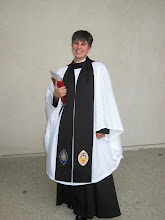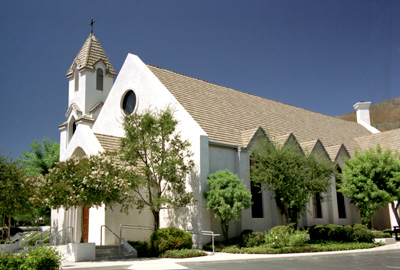
Indeed, I am a fan of Rocky and Bullwinkle. I loved that show as a kid! However, the article you will find below is not about the kind of magic Rocky and Bullwinkle parodied, but rather about a recent archaeological discovery that references, "Christ the Magician." Now, isn't that intriguing! It could be Jesus, or it could not be Jesus, but regardless, it's a great read and will give you a sense of how archaeology and Biblical studies intersect. (You can also read the article on the
MSNBC website by
clicking here.)
Earliest reference describes Christ as 'magician'
Bowl dated between late 2nd century B.C. and the early 1st century A.D.

By Jennifer Viegas

updated 7:23 a.m. PT, Wed., Oct. 1, 2008
A team of scientists led by renowned French marine archaeologist Franck Goddio recently announced that they have found a bowl, dating to between the late 2nd century B.C. and the early 1st century A.D., that is engraved with what they believe could be the world's first known reference to Christ.
If the word "Christ" refers to the Biblical Jesus Christ, as is speculated, then the discovery may provide evidence that Christianity and paganism at times intertwined in the ancient world.
The full engraving on the bowl reads, "DIA CHRSTOU O GOISTAIS," which has been interpreted by the excavation team to mean either, "by Christ the magician" or, "the magician by Christ."
"It could very well be a reference to Jesus Christ, in that he was once the primary exponent of white magic," Goddio, co-founder of the Oxford Center of Maritime Archaeology, said.
He and his colleagues found the object during an excavation of the underwater ruins of Alexandria's ancient great harbor. The Egyptian site also includes the now submerged island of Antirhodos, where Cleopatra's palace may have been located.
Both Goddio and Egyptologist David Fabre, a member of the European Institute of Submarine Archaeology, think a "magus" could have practiced fortune telling rituals using the bowl. The Book of Matthew refers to "wisemen," or Magi, believed to have been prevalent in the ancient world.
According to Fabre, the bowl is also very similar to one depicted in two early Egyptian earthenware statuettes that are thought to show a soothsaying ritual.
"It has been known in Mesopotamia probably since the 3rd millennium B.C.," Fabre said. "The soothsayer interprets the forms taken by the oil poured into a cup of water in an interpretation guided by manuals."
He added that the individual, or "medium," then goes into a hallucinatory trance when studying the oil in the cup.
"They therefore see the divinities, or supernatural beings appear that they call to answer their questions with regard to the future," he said.
The magus might then have used the engraving on the bowl to legitimize his supernatural powers by invoking the name of Christ, the scientists theorize.
Goddio said, "It is very probable that in Alexandria they were aware of the existence of Jesus" and of his associated legendary miracles, such as transforming water into wine, multiplying loaves of bread, conducting miraculous health cures, and the story of the resurrection itself.
While not discounting the Jesus Christ interpretation, other researchers have offered different possible interpretations for the engraving, which was made on the thin-walled ceramic bowl after it was fired, since slip was removed during the process.
Bert Smith, a professor of classical archaeology and art at Oxford University, suggests the engraving might be a dedication, or present, made by a certain "Chrestos" belonging to a possible religious association called Ogoistais.
Klaus Hallof, director of the Institute of Greek inscriptions at the Berlin-Brandenburg Academy, added that if Smith's interpretation proves valid, the word "Ogoistais" could then be connected to known religious groups that worshipped early Greek and Egyptian gods and goddesses, such as Hermes, Athena and Isis.
Hallof additionally pointed out that historians working at around, or just after, the time of the bowl, such as Strabon and Pausanias, refer to the god "Osogo" or "Ogoa," so a variation of this might be what's on the bowl. It is even possible that the bowl refers to both Jesus Christ and Osogo.
Fabre concluded, "It should be remembered that in Alexandria, paganism, Judaism and Christianity never evolved in isolation. All of these forms of religion (evolved) magical practices that seduced both the humble members of the population and the most well-off classes."
"It was in Alexandria where new religious constructions were made to propose solutions to the problem of man, of God's world," he added. "Cults of Isis, mysteries of Mithra, and early Christianity bear witness to this."
The bowl is currently on public display in the exhibit "Egypt's Sunken Treasures" at the Matadero Cultural Center in Madrid, Spain, until November 15.
 Below is a letter from Bishop Bruno (pictured left) regarding the work of the task force on marriage, including some very helpful educational materials. Do take a look if you have a moment. You will be glad you did!
Below is a letter from Bishop Bruno (pictured left) regarding the work of the task force on marriage, including some very helpful educational materials. Do take a look if you have a moment. You will be glad you did! Dear Sisters and Brothers,
Dear Sisters and Brothers,








